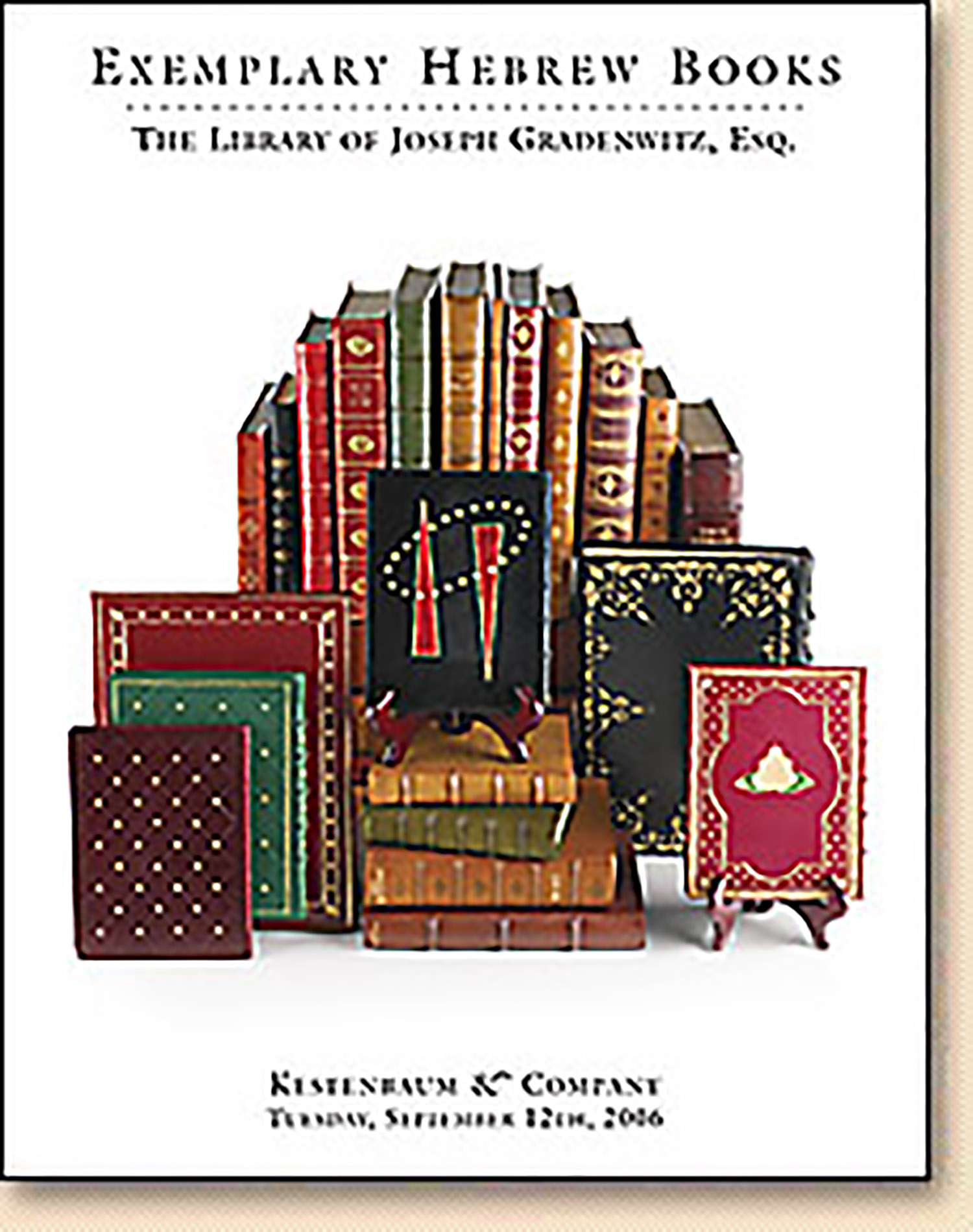Seder Le-Shalosh Regalim ke-Minhag K”K Carpentras [prayers for the holidays of Pesach, Shavuoth and Sukkoth, including Hagadah for Pesach]. According to the exotic rite of Carpentras

AUCTION 34 |
Tuesday, September 12th,
2006 at 1:00
Exemplary Hebrew Books: The Library of Joseph Gradenwitz, Esq.
Lot 105
(LITURGY).
Seder Le-Shalosh Regalim ke-Minhag K”K Carpentras [prayers for the holidays of Pesach, Shavuoth and Sukkoth, including Hagadah for Pesach]. According to the exotic rite of Carpentras
Amsterdam: Hertz Levi Rofe and his son-in-law Kosman 1759
Est: $1,200 - $1,800
PRICE REALIZED $1,000
The town of Carpentras in the Vaucluse Department, fourteen miles North-East of Avignon had a Jewish presence almost without interruption since the 12th-century. Abraham Monteil, editor of this prayer book, was a native of L’Isle (L’Isle-sur-la-Sorgue), smallest of “the four holy communities” of Comtat Venaissin, the papal territory in Southern France that historically provided a safe haven for Jews fleeing the provinces of Languedoc and Provence, from whence they were expelled by the French monarchs. (The other three communities in this tetrapolis were: Avignon, Carpentras, and Cavaillon.) The Jews of the Comtat had their own synagogue rite, which by the close of the 18th-century was rapidly falling into disuse. See C.Roth, “The Liturgy of Avignon and the Comtat Venaissin,” Journal of Jewish Bibliography I (1939) p. 99-105; reprinted in Cecil Roth, Studies in Books and Booklore (1972), pp. 81-87; EJ, Vol. V, cols. 208, 859; Vol. IX, col.105; Vol. XI, col. 402.
The Mehlman Catalogue notes two copies of this unusual prayer-book each containing different pagination. The present copy is similar to Mehlman’s more complete version with the later insertion of a number of leaves following publication. These nine rare post-publication leaves are as follows:
f. [2], the approbation signed by five Carpentras Rabbis, after f. 21; two additional leaves with a new pagination starting again with f. 19; one unnumbered leaf between f. 30 and 31(and marked such, “belongs between f. 30 and 31;” one leaf between f. 33 and 34; four unnumbered leaves between
f. 149 and 150 (and marked such, “belongs after f. 149”)
